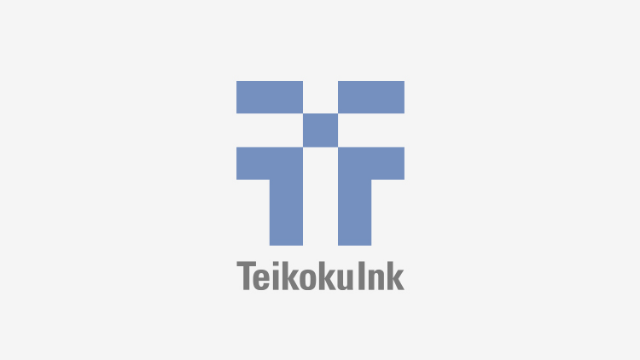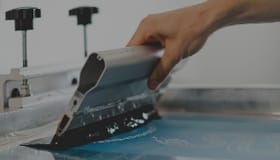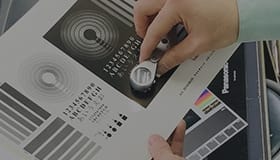Product overview
GLS-HF ink series has very good printing stability, adhesion, and resistance, which are indispensable for glass printing. A wide range of color variations is available, which can be expanded to metallic, pearl, and other functional inks.
- Solvent type ink

Application
- Decorative printing on glass materials for smartphones, tablets, etc.
-
Automobile, Motorcycle
-
Home Appliance (IoT)
-
Smartphone, Tablet, Smart watch
-
Sensor
-
Game
-
Others
Features, Function
- Halogen compounds such as Chlorine (CI) and Bromine (Br) are not intentionally used in raw materials.
- A wide range of color variation enables the creation of colorful printed materials.
- It has excellent adhesion to glass and various types of resistance, and it can be used in a wide range of fields.
- Electrical properties
- Multi color setting
- Halogen Free
- UV Resistance
- Pad Printing
- Fast dry, slow dry
Substrate
- Glass plate
- Glass
Dilution
- Z-705 SOLVENT(slow)
- DILUTION 3 to 10%
- *Do not use other solvents as they may cause contamination of halogen and may adversely affect curing, adhesion, stencil stability, or other properties
Catalyst, Promoter mixing
- Be sure to add 0.5% of GLS GLASS PROMOTER
- Pot life: 6 hrs.
- *The ink will not turn to gel after the pot life (6 hrs.) has expired. Due to its poor adhesion and resistance, be sure to mix only enough to use.
Promoter
- SM-40 DEFOAMER less than 2%(For anti-foam and improvement in leveling)
Recommended cleaner
- Screen Cleaner L2
Mesh
- T 200 to 300 mesh(Coverage would be, Black 35 to 40m2/kg, White 30-35m2/kg at 250 mesh)
Drying
- 160℃ 30 min
- Overprint
Each layer 160℃ 10 min (tack-free)
Final layer 160℃ 30 min
- *Ensure sufficient drying
Standard colors
-
HF000 MEDIUM
-
HF001 VICTORIA
-
HF169 SCARLET
-
HF189 RED
-
HF239 LIGHT YELLOW
-
HF249 LIGHT YELLOW
-
HF399 BLUE
-
HF529 ORANGE
-
HF589 MAGENTA
-
HF619 WHITE
-
HF679 WHITE
-
HF829 VIOLET
-
HF919 BLACK
-
HF939 NC BLACK
-
HF979 BLACK
-
HF989 PIANO BLACK
Caution
- As Halogen compounds may be mixed in the ink, only designated Solvents and Catalysts can be used.
- Please check the squeegee rubber, emulsion, materials and substrates before use, as they may contain Halogen compounds.
- Checking before commercialization: Adhesion and resistance properties may change due to differences in substrates, processes, printing and drying conditions. Be sure to check the adhesiveness and resistance properties before mass production printing
- Ink shelf life: 12 months from production date, unopened.
Safety
- UN No.: Not classified in the definition
- UN Classification: Not classified in the definition
Handling
- Use safety gloves and eyeglasses to protect skin and eyes. If the ink comes in contact with skin, wash with soap and plenty of water (or lukewarm water) and consult with a doctor.
- Containers should be closed tightly after use and stored in a cool and dark place.
- SDS is available upon request. Please request a copy and read it carefully before handling the products.
Resistance
| Test item | Test conditions | Test results |
|---|---|---|
| Adhesion | JIS K 5600-5-6:ISO2409(Cross-cut method), 1mm interval 6×6, cellophane tape peeling, no peeling off the substrate | 0(no peel) |
| Pencil Hardness | JIS K 5600-5-4:ISO 15184(pencil), weight 750g, Pencil hardness which does not make scar. | 2H |
| Heat | 80℃、1000H、Check appearance & peel from the substrate | No defect |
| Hot water | Soak in 60℃ hot water, 72 hrs. Check appearance and peel from the substrate | No defect |
| Humidity | 60℃,95%RH 1000 hrs., Check appearance and peel from the substrate | No defect |
| Boiling water | Boiling water 24 hrs., Check appearance and peel from the substrate | No defect |
| Scrub | Gakushin scrub tester, with cotton, 500g weight, 1000 back and forth, check color fade | No defect |
| Accelerated weathering | (Xenon lamp) Weather meter, 1000 hrs., BP temp. 63+/-3℃:Rain rate 18 min/120 min、check color fade and peeling off | No defect |
| Light fastness | (Caron arc) Fade meter, 600 hrs., BP temperature 63+/-3℃, check color fade and peeling off | No defect |
Test Condition
- Test conditions 【GLS-HF 919 BLACK】 【GLS GLASS PROMOTER 0.5%】 【T-250】 【Z-705 SOLVENT 10%】 【160℃ 30 min】 【Substrate:GLASS PLATE】
- Above resistance test results are measured results in our laboratory and they are not guaranteed values.
- Information contained in this catalog may change without prior notice.
FAQ
-
What are screen inks for glass substrate printing? And what are their characteristics?
-
For printing on glass substrate, GLS-HF ink series , a two component type Halogen Free ink for printing on glass substrates is recommended.
The GLS-HF ink series is characterized by the fact that it is an organic ink, unlike the inorganic inks conventionally used for glass substrate printing.
Therefore, GLS-HF ink has excellent functions to solve the problems of inorganic inks (burning type ink) such as “lack of color variation” and “environmentally hazardous substances”, etc.
Related link
Introduction of GLS-HF ink (1) -
Do you have any information related to reducing the cost of manufacturing flat panels and touch panels?
-
In the manufacturing process of flat panel displays, double-sided adhesive tapes are used to bond functional films and protective films that prevent panels from getting dirty or scratched. Replacing this double-sided tape with the UV adhesive that we offer could lead to a reduction in manufacturing costs. This is because bonding with this double-sided adhesive tape requires many processes, including “cutting the double-sided adhesive tape to fit the bonding surface,” “bonding the double-sided adhesive tape,” and “removing the release paper”. In addition, there is the problem of waste such as release paper and excess portions when matching the adhesive to the bonding surface. However, by using UV adhesive, it is possible to solve the problem of the number of processes and the problem of waste at the same time.”
-
What are the meanings of X and Q used in the ink names such as IPX, INQ, FMX, etc.?
-
X and Q are used to designate isophorone-free inks.
-
What is non-conductive black ink?
-
Non-Conductive Black Ink is an ink that has a high electrical resistance of the printed ink layer, and has both a function that is difficult for electricity to pass through and a high opaque black color. The high electrical resistance (low conductivity) prevents malfunctions and failures of electronic components, etc., caused by electric current flowing through the printed ink layer. Furthermore, its high opacity makes it suitable for printing on flat panels and smartphone displays that require light-shielding properties.
Related Link
Introduction of Functional Black Ink -
What is high opacity black and white?
-
This function provides a beautiful black or white color with high opacity even in environments where backlights are used, such as outer frames of flat panels and touch panels.
Related link
Introduction of GLS-HF (3)

